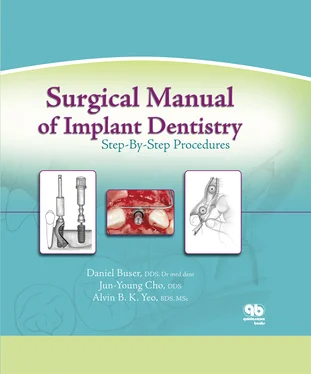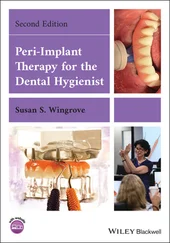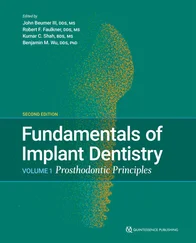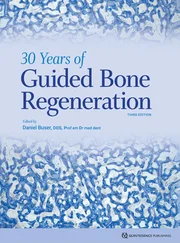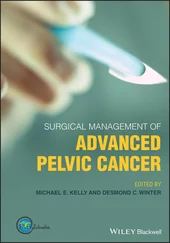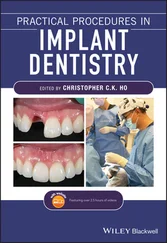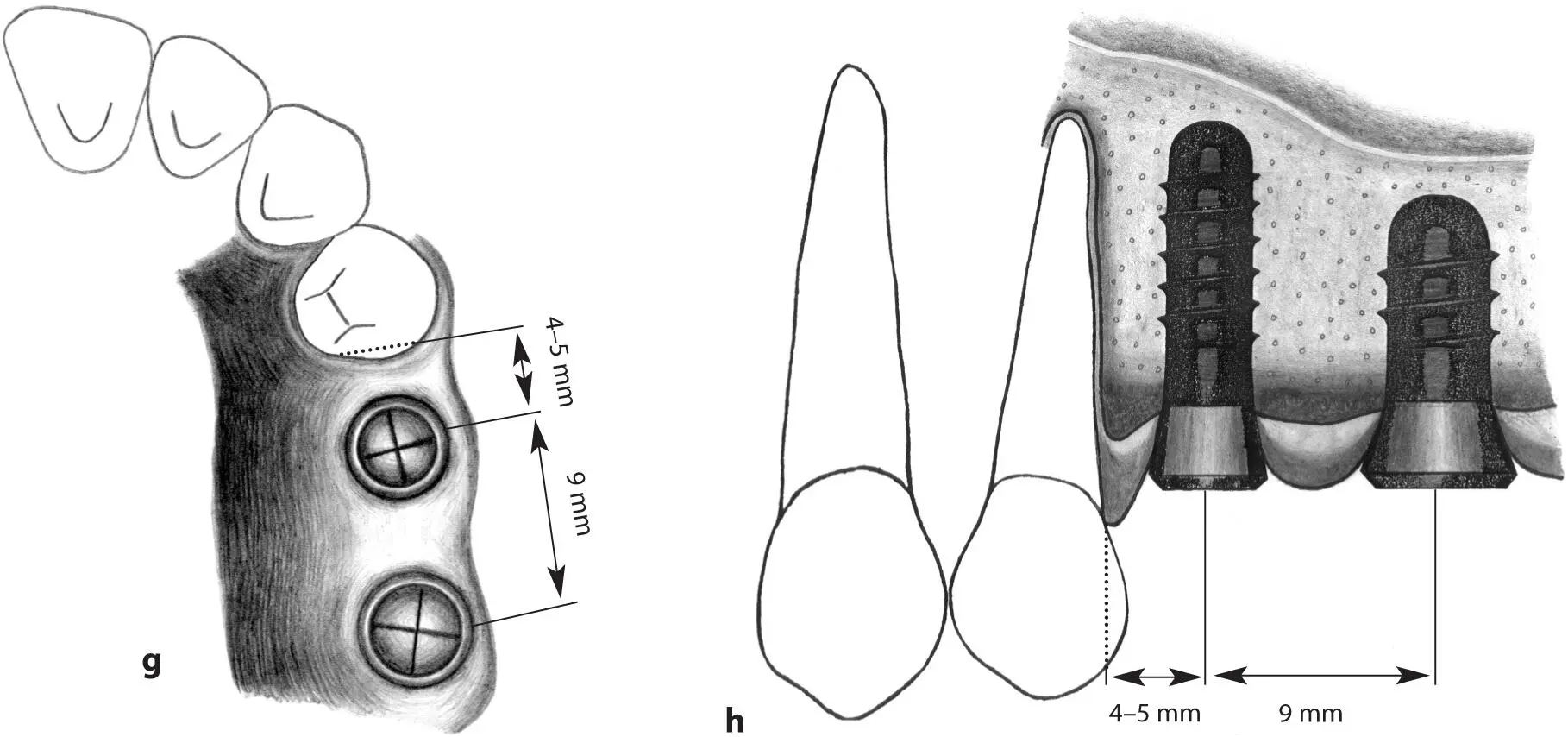
Figs 1-11g and 1-11h Occlusal (g) and lateral (h) views of regular neck and wide neck implants. When a regular neck implant and a wide neck implant are indicated to replace a missing second premolar and molar, the regular neck implant should be placed 4 to 5 mm from the tooth and the wide neck implant placed approximately 9 mm from the anterior implant.
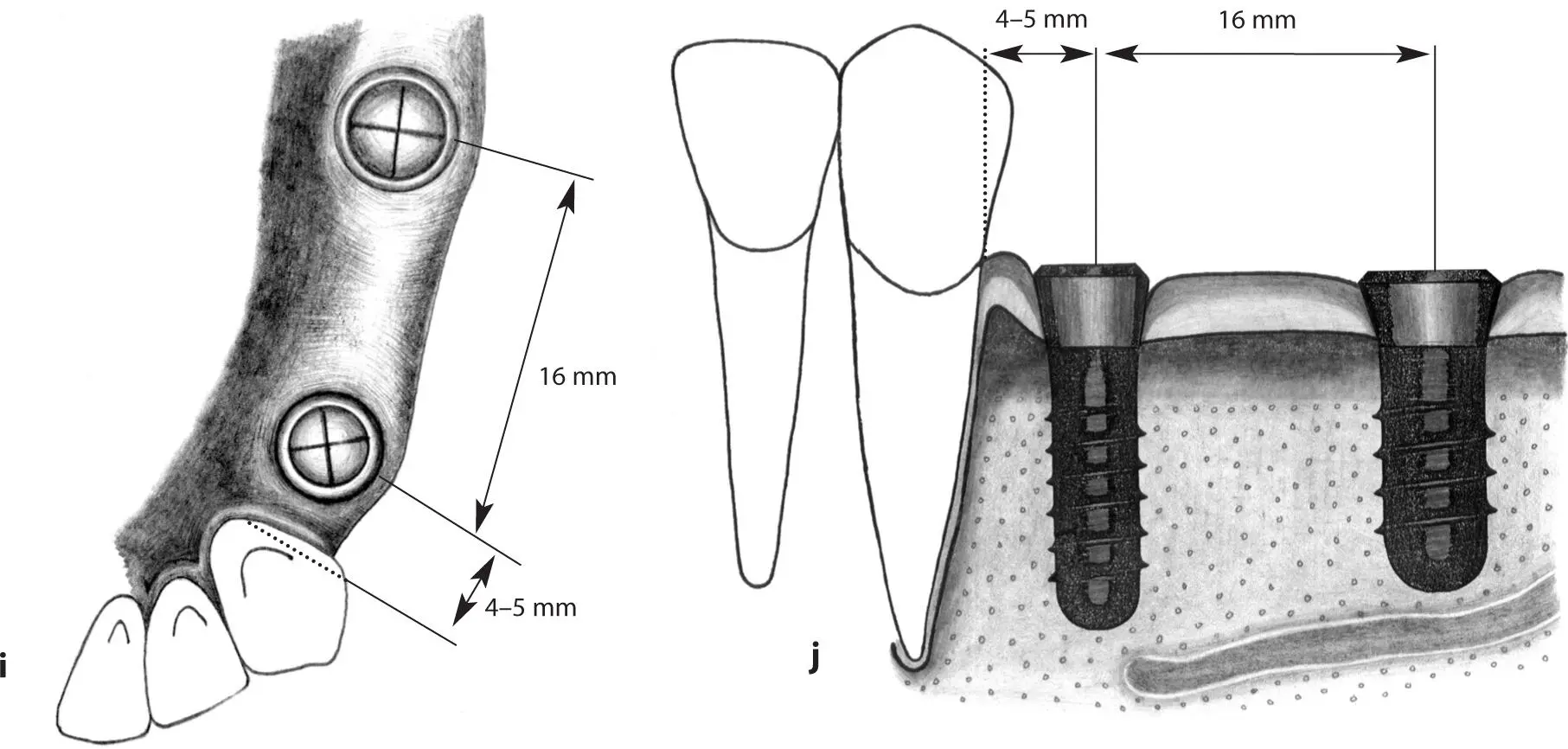
Figs 1-11i and 1-11j Occlusal (i) and lateral (j) views of implants positioned in the first premolar and first molar sites. In this extended posterior distal extension situation, a regular neck implant and a wide neck implant are indicated as abutments for a three-unit fixed partial denture. The regular neck implant is positioned 4 to 5 mm from the tooth. The wide neck implant is inserted about 16 mm from the anterior implant.
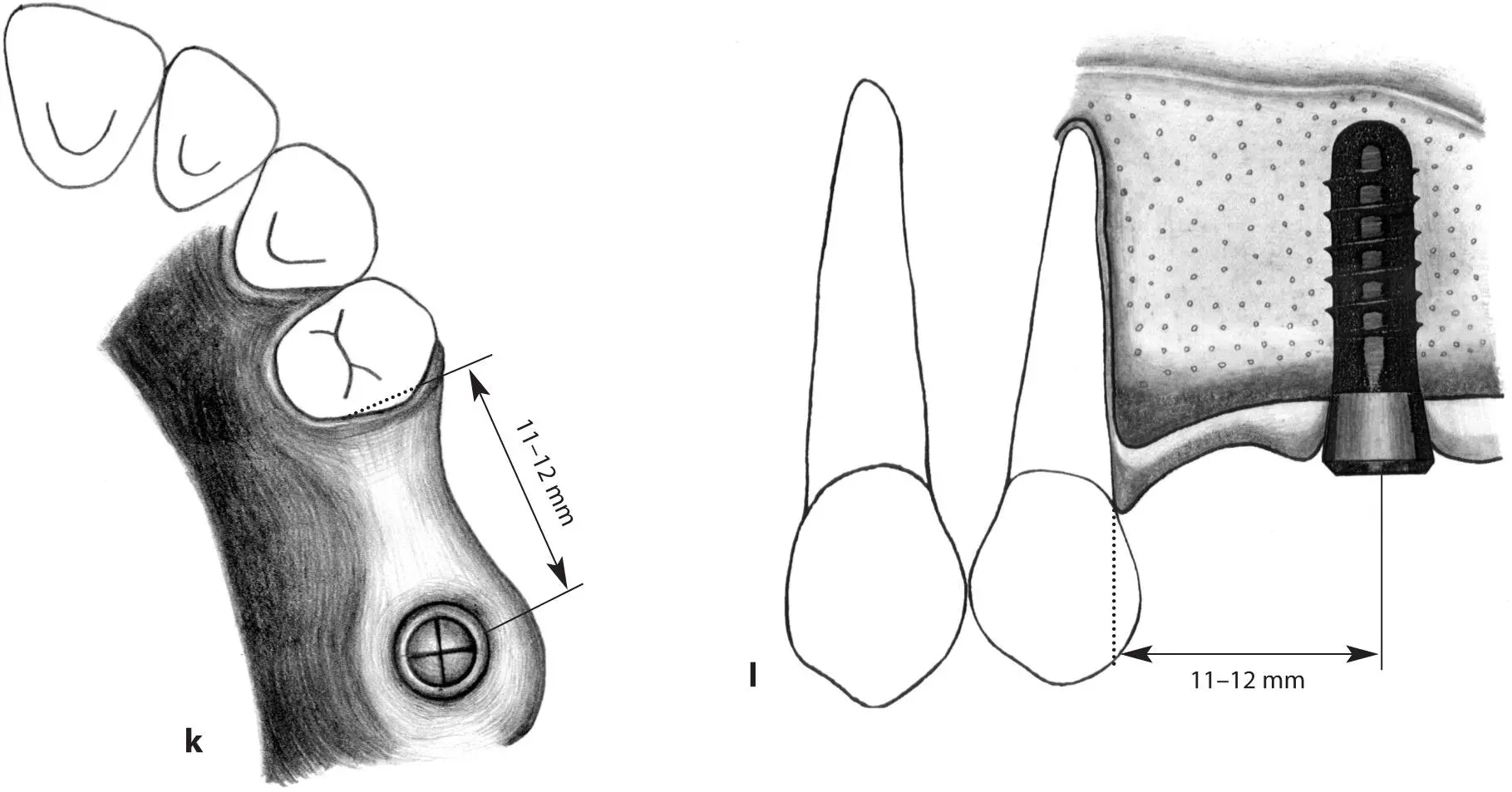
Figs 1-11k and 1-11l Occlusal (k) and lateral (l) views of a short distal extension situation. A regular neck implant is indicated to restore the missing first molar and serve as a distal abutment to a combined tooth- and implant-supported three-unit fixed partial denture. The implant is positioned 11 to 12 mm from the tooth.
Chapter 2
Indications for Each Implant Type
Modern implant systems, such as the Straumann Dental Implant System, offer a variety of different implant types for the various clinical indications of implant therapy. More than 25 years ago, most implant systems offered just one implant type, primarily to treat fully edentulous patients with implant-borne restorations; the standard implant dates back to 1986. Due to the expansion of implant therapy for partially edentulous patients in the late 1980s, the application of implants has steadily increased. In recent years, the single-tooth gap and the distal extension situation have become the two most important indications for implant therapy.
Today, screw-type implants are generally preferred in implant dentistry. Therefore, the diameter of the main implant body with its thread must be differentiated from the diameter of the implant shoulder (other implant systems call it a platform ). The Straumann Dental Implant System includes three diameters for implant shoulders (ie, regular neck, wide neck, and narrow neck) and three diameters for implant threads (ie, standard, wide body, reduced diameter, and tapered effect).
This chapter presents the author's preferences where these implant types are primarily used.
Fig 2-1 Standard implant.

Fig 2-1a Two standard implants are restored with a three-unit fixed partial denture in a mandibular distal extension situation. The implants provide adequate support and function against the opposing dentition.
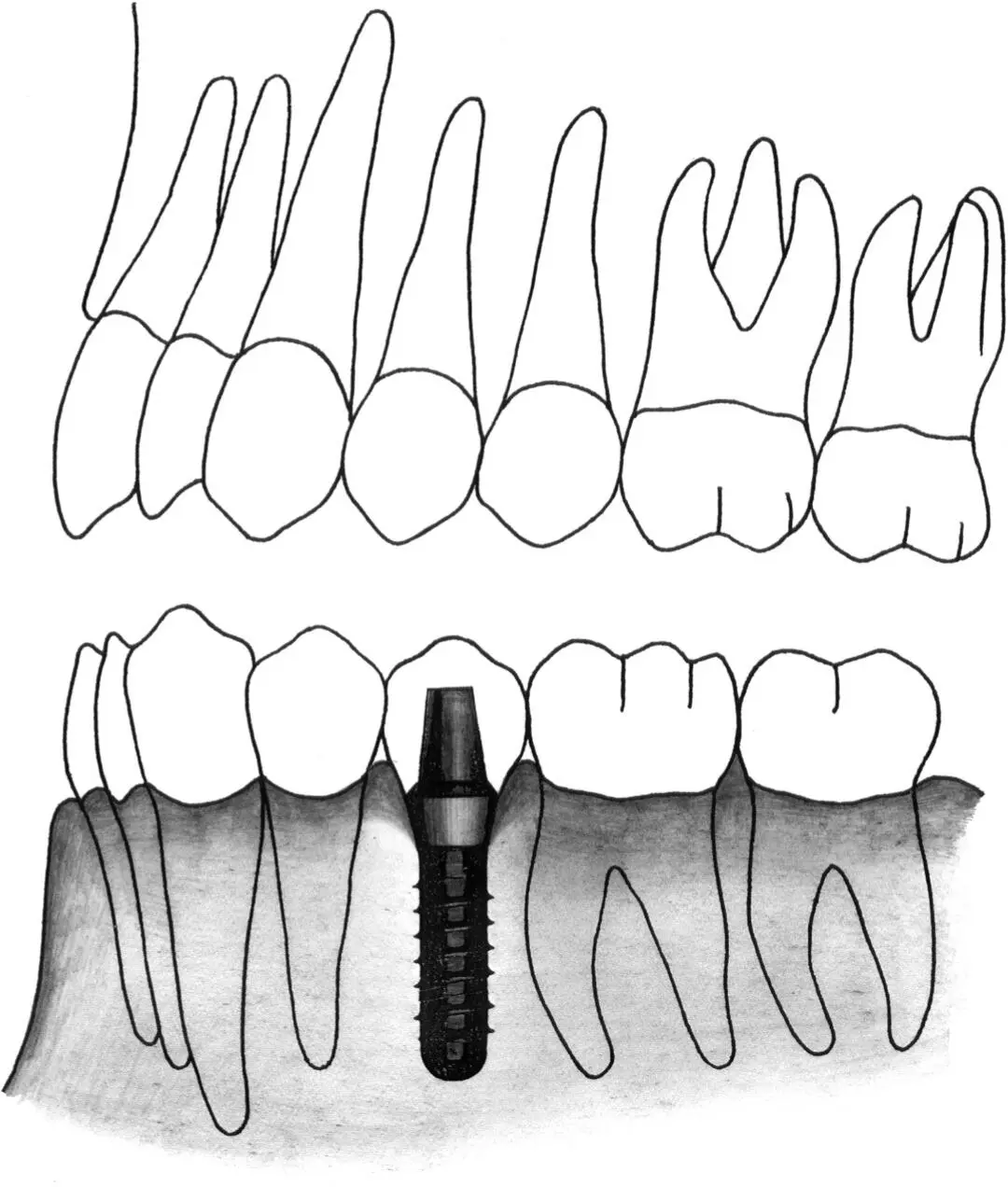
Fig 2-1b For this single-tooth gap, a 12-mm-long standard implant is indicated to replace a missing mandibular second premolar.
Fig 2-2 Standard plus implant.
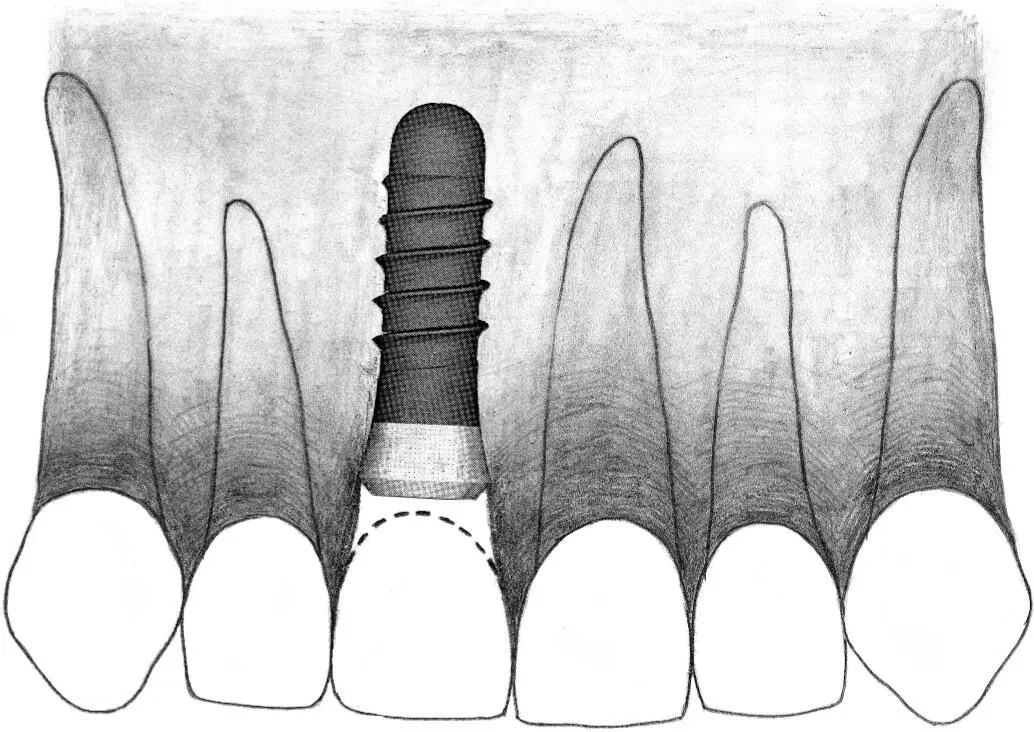
Fig 2-2a In an esthetic restoration involving a single-tooth gap in the anterior region, a standard plus implant is indicated to replace a missing central incisor.
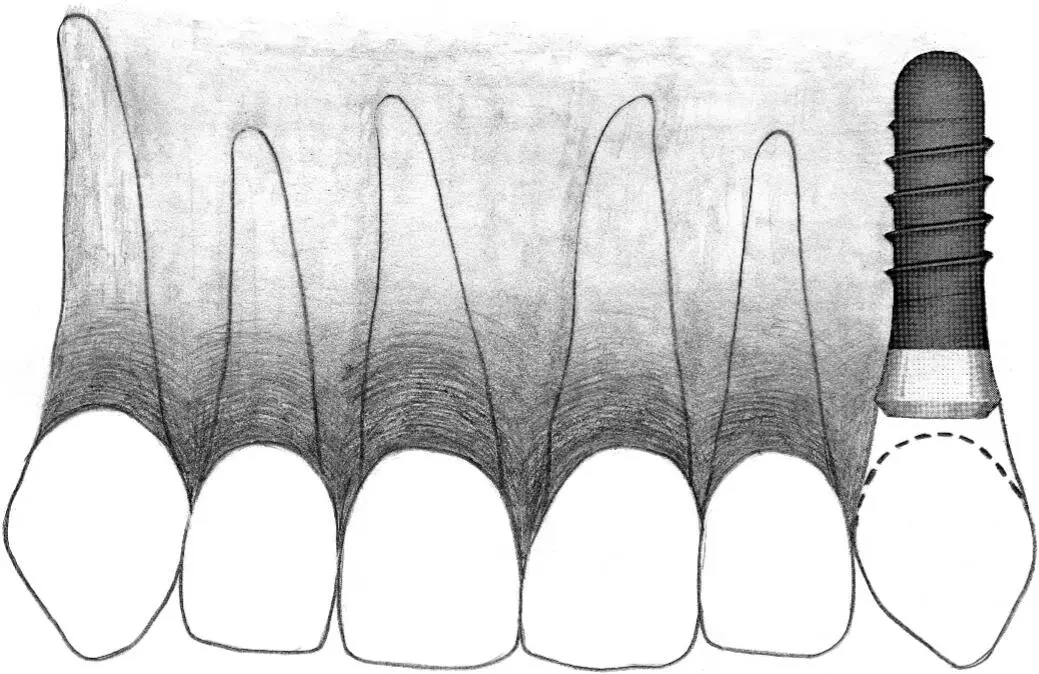
Fig 2-2b A standard plus implant can also be used to replace a maxillary canine in the esthetic zone.
Fig 2-3 Wide body implant.
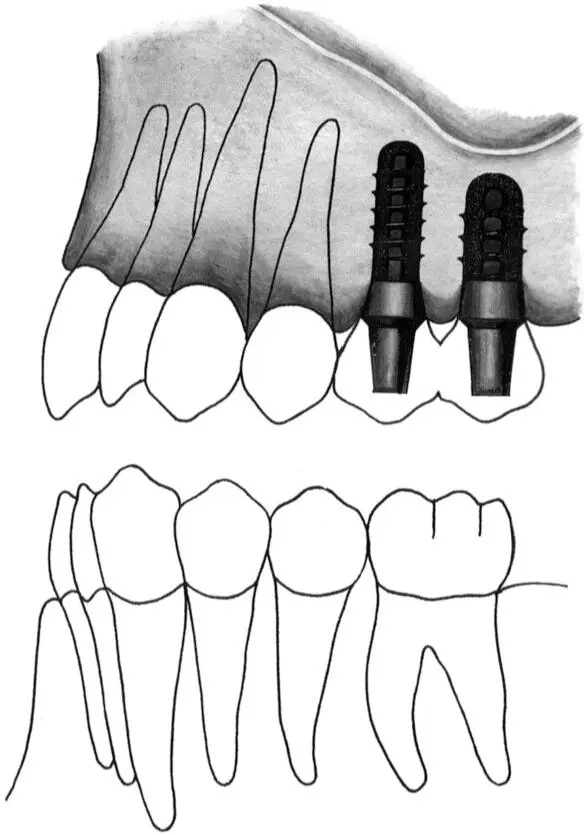
Fig 2-3a Shorter and wider implants are indicated in the posterior maxilla to avoid the maxillary sinus. A standard implant is indicated in the second premolar site, and a wide body implant is indicated in the first molar site.
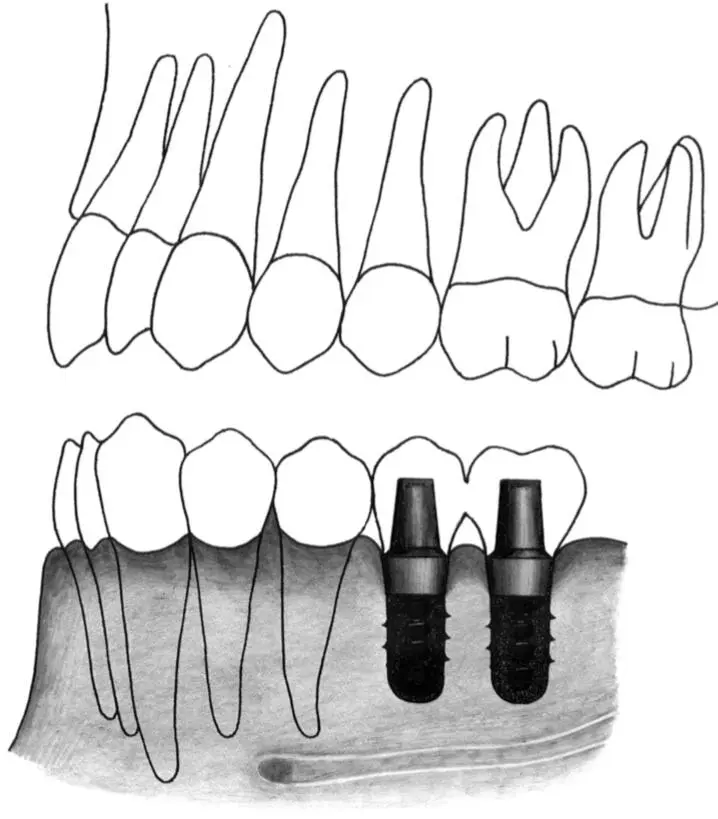
Fig 2-3b Shorter and wider implants are also indicated in the posterior mandible to avoid the mandibular canal. Two wide body implants can be placed in the first and second molar sites. These implants are restored and, in cases of short 6-mm implants, routinely splinted.
Fig 2-4 Wide neck implant.
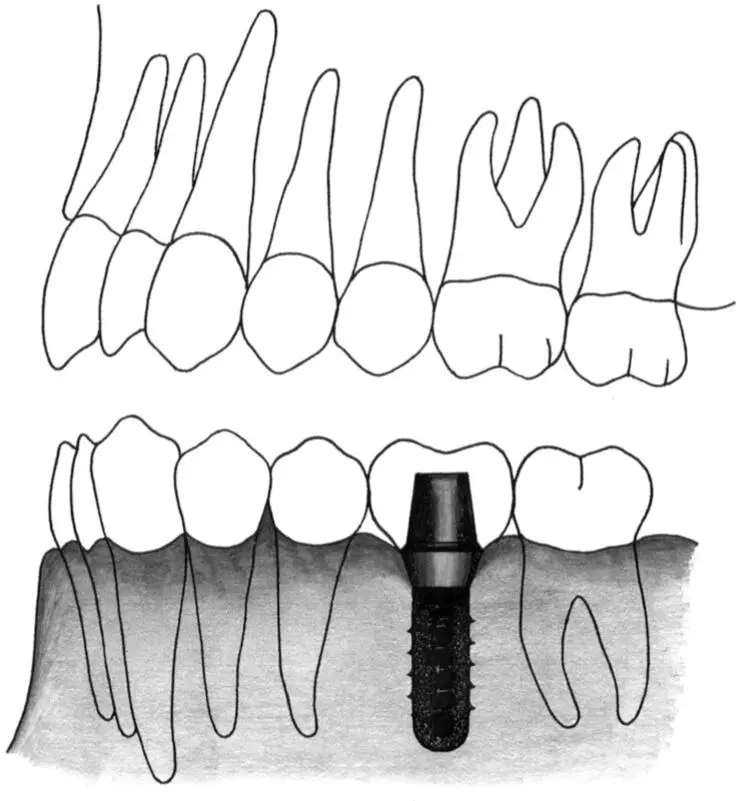
Fig 2-4a A wide neck implant is ideal for a single-tooth gap in the first molar position.
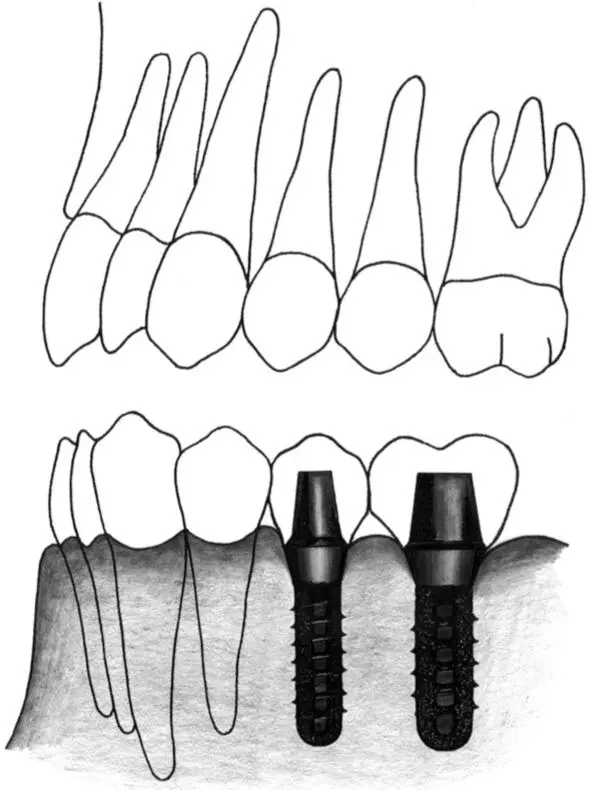
Fig 2-4b In a posterior distal extension situation, a standard implant and a wide neck implant are ideal replacements for a missing second premolar and first molar, respectively.
Fig 2-5 Narrow neck implant.
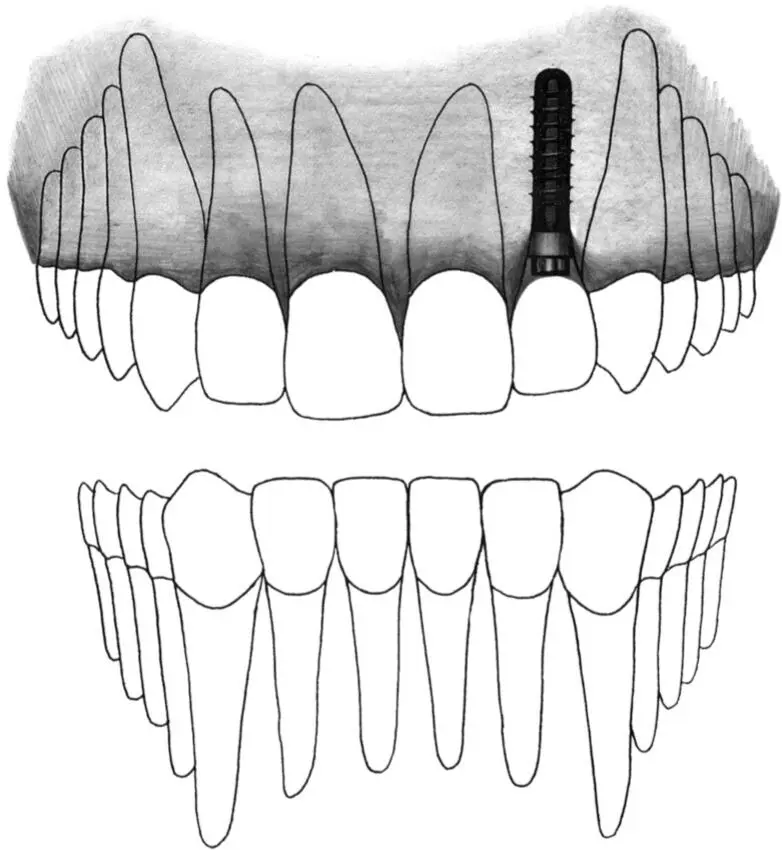
Fig 2-5a A narrow neck implant is indicated to replace a missing lateral incisor where the single-tooth gap offers limited space.
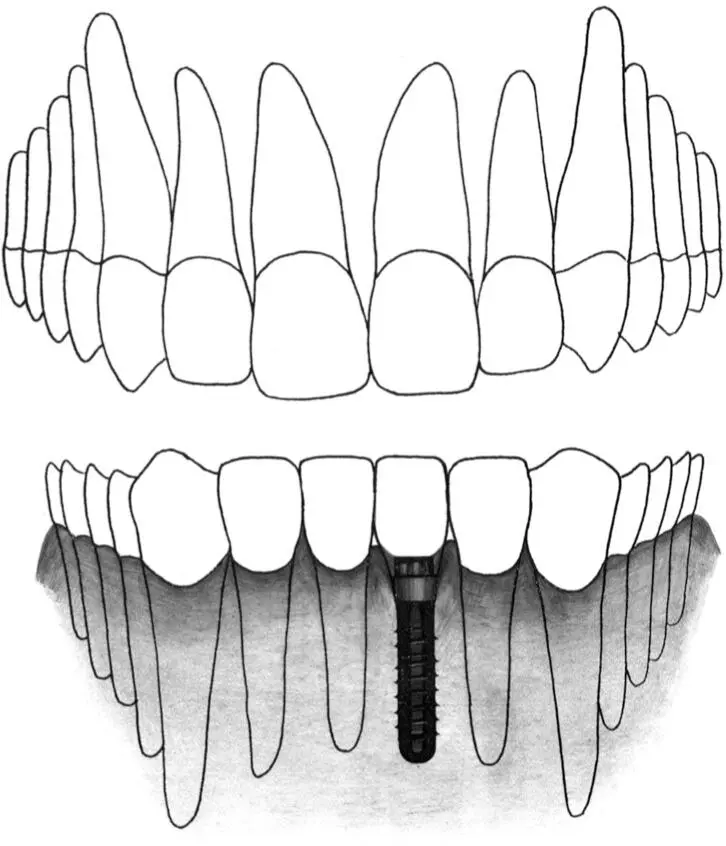
Fig 2-5b Another indication for a narrow neck implant is to replace missing mandibular incisors where available tooth space is likewise restricted.
Fig 2-6 Reduced-diameter implant.
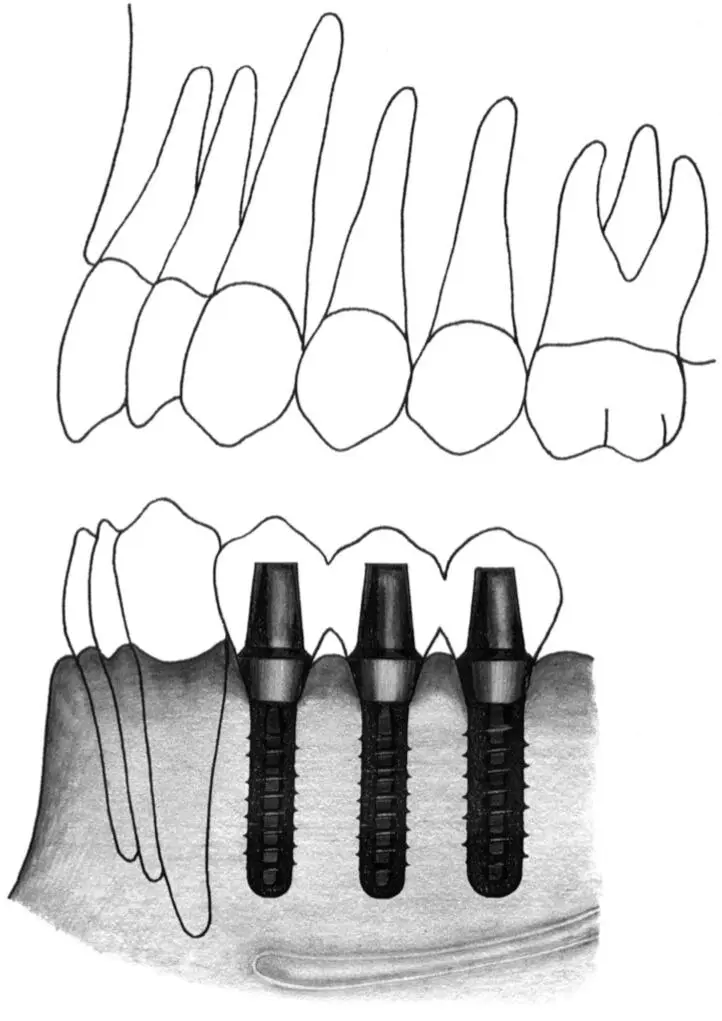
Fig 2-6 For situations in which the posterior distal extension has inadequate alveolar ridge width, reduced-diameter implants can be used in premolar sites, whereas a standard implant can be placed in the first molar position. Splinting of the crowns is recommended when implants of reduced diameter are used.
Fig 2-7 Tapered effect implant.
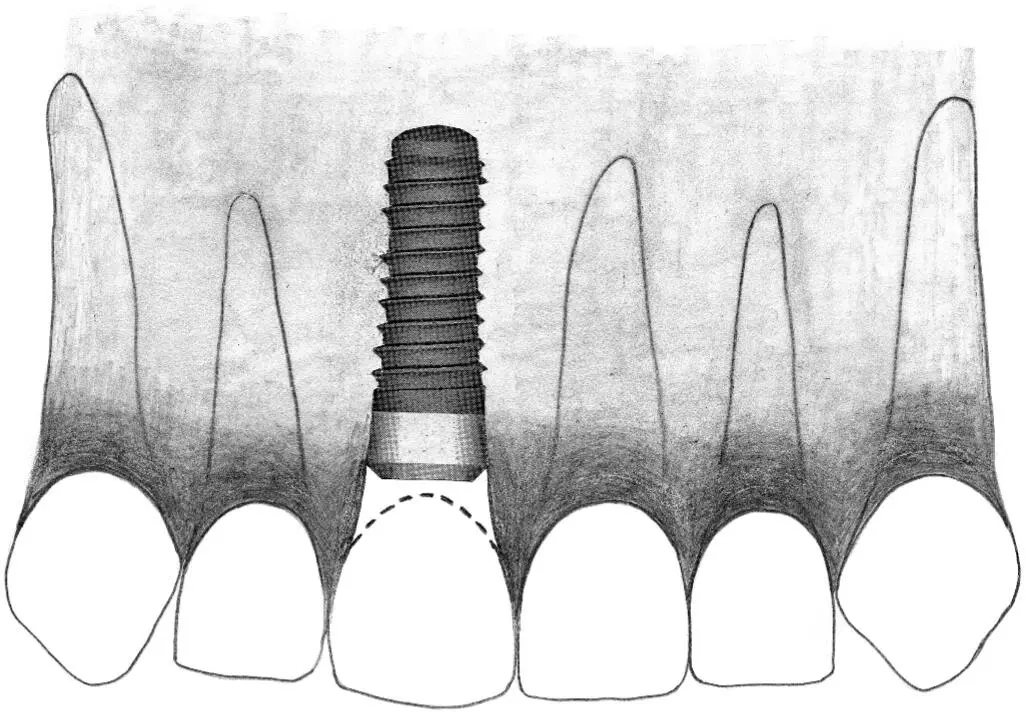
Fig 2-7a For a single-tooth gap following an extraction in the anterior maxilla, a tapered effect implant is indicated to replace a missing central incisor.
Читать дальше
